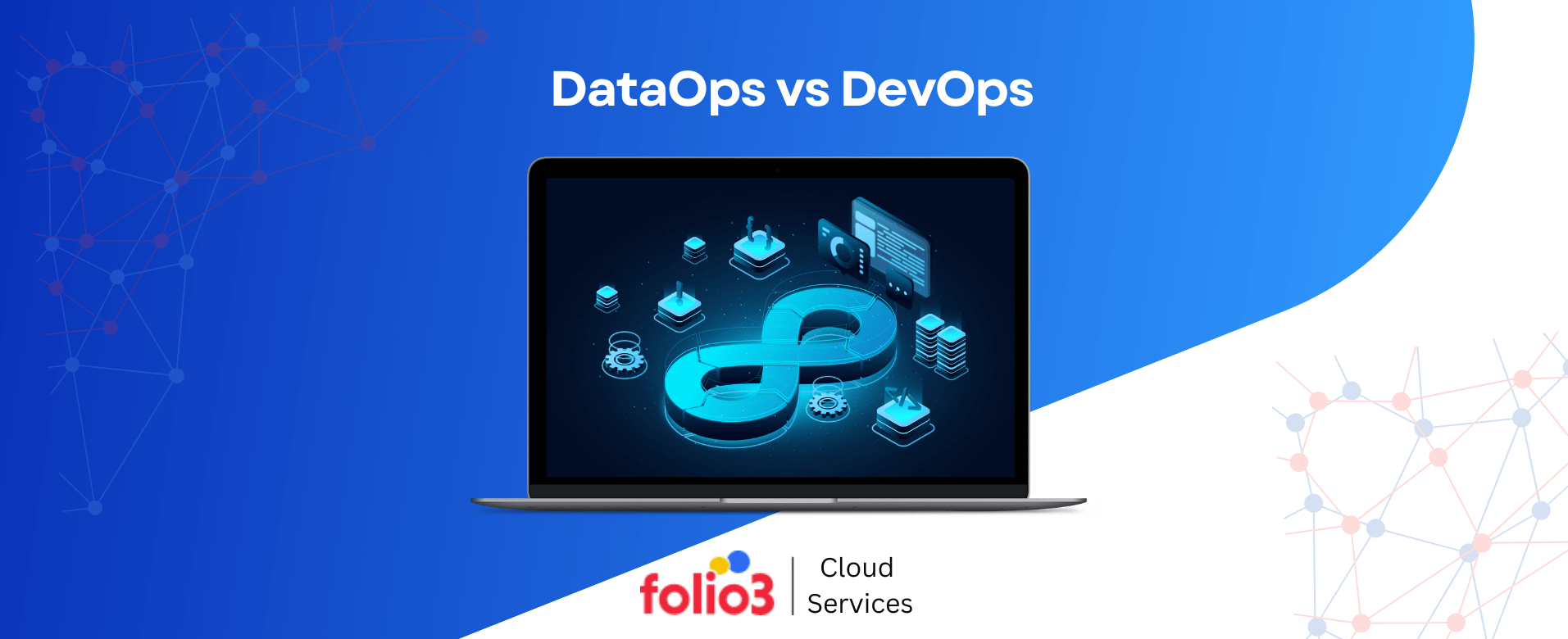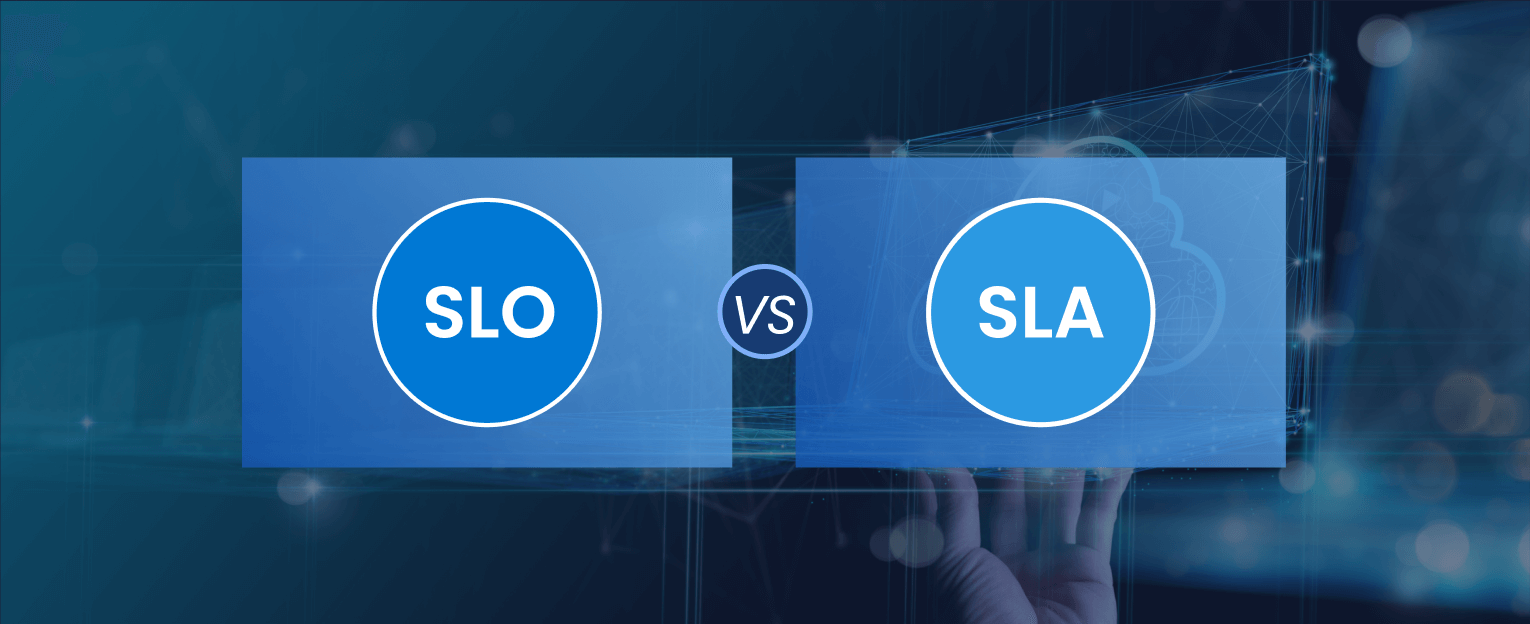In the rapidly evolving cloud computing industry, businesses constantly seek strategies to stay ahead of the curve and drive innovation. Two key concepts often surface during discussions with cloud providers are “cloud native vs cloud agnostic”.
Both approaches offer different advantages and challenges, and understanding their differences is crucial for making informed decisions that align with your organization’s goals.
As you explore these options, you must examine what each term truly means and how they can impact your cloud strategy.
Discover the key differences with our interactive comparison table.
What is Cloud Native?
Cloud-native refers to an approach to building and running applications that fully exploit the advantages of cloud computing.
In a cloud-native model, applications are explicitly designed to operate within cloud environments, using microservices, containers, and continuous integration/continuous deployment (CI/CD) pipelines.
These applications are typically deployed in a distributed manner, allowing them to scale dynamically based on demand. The architecture is inherently resilient, designed to handle failures and recover automatically, minimizing downtime.
The cloud-native approach enables businesses to innovate rapidly by making deploying, updating, and managing applications more accessible.
With the help of managed cloud services and using the cloud provider’s built-in services—such as databases, messaging, and authentication—developers can focus more on writing code that delivers business value rather than worrying about infrastructure concerns.
What is Cloud Agnostic?
Cloud agnostic refers to a strategy where applications, services, and infrastructure are designed to operate across multiple cloud environments without being dependent on any single cloud provider.
The primary goal of this approach is to ensure that organizations have the flexibility to move their workloads between different cloud platforms (such as AWS, Azure, and Google Cloud) or even run them on-premises or in a hybrid cloud setup without significant changes to the application architecture or operations.
When applications are decoupled from specific cloud services, a cloud-agnostic approach helps prevent vendor lock-in and enables businesses to optimize costs, performance, and availability by leveraging cloud consulting services.
Cloud Native Approach vs Cloud Agnostic Approach
When it comes to cloud computing, the terms “cloud native vs cloud agnostic” often come up, and they represent two different approaches to building and managing applications in the cloud.
Cloud Native
A cloud-native approach involves designing and building applications that run in a cloud environment. These applications are typically composed of microservices, packaged in containers, and orchestrated using tools like Kubernetes.
The architecture is tightly integrated with the cloud provider’s services, taking full advantage of the cloud’s scalability, automation, and resilience.
This approach is ideal for organizations looking to fully leverage the capabilities of a specific cloud provider, allowing them to innovate quickly and efficiently.
However, reliance on a single cloud environment can create dependencies that make switching providers or operating in a multi-cloud scenario challenging.
Cloud Agnostic
A cloud-agnostic approach emphasizes flexibility and portability. Applications designed with a cloud-agnostic mindset are built to run on any cloud platform, avoiding tight coupling with any particular provider’s services.
This is achieved using standard, open-source technologies and avoiding proprietary services that tie an application to a single cloud environment.
This approach offers the freedom to move applications between cloud providers, ensuring independence and avoiding vendor lock-in. It may require additional effort to maintain and optimize since it doesn’t fully leverage any cloud provider’s unique features and optimizations.
Comparison Table
| Feature | Cloud Native | Cloud Agnostic |
| Definition | A software development approach that leverages cloud computing platforms for building and running applications | A software development approach that can be deployed on multiple cloud platforms or on-premises |
| Core Principles | Containerization, microservices, DevOps, continuous delivery, immutable infrastructure | Portability, flexibility, vendor lock-in avoidance |
| Technology Stack | Kubernetes, Docker, cloud-native services (e.g., serverless databases) | Virtualization, infrastructure-as-code, platform-independent tools |
| Deployment | Cloud-specific platforms (e.g., AWS, Azure, GCP) | Multiple cloud platforms or on-premises infrastructure |
| Vendor Lock-In | Potential for higher vendor lock-in | Reduced vendor lock-in |
| Scalability | Typically offers high scalability | It can achieve scalability but might require more effort |
| Complexity | It can be more complex to implement initially | Generally simpler to implement |
| Cost | It can be more cost-effective in the long run | Initial costs might be higher |
| Examples | Applications built on Kubernetes, using serverless functions | Applications running on virtual machines using infrastructure-as-code |
Pros of the Cloud Native Approach
Scalability
Cloud-native applications are built to scale automatically based on traffic and demand. This means they can handle large fluctuations in usage without manual intervention, making them ideal for businesses that experience variable loads.
Resilience
Designed with failure in mind, cloud-native applications can automatically recover from system outages or disruptions. This ensures high availability and reliability, which are crucial for business continuity.
Faster Time to Market
Microservices and CI/CD pipelines enable rapid development, testing, and deployment of new features. This agility allows businesses to market new products and updates faster, giving them a competitive edge.
Resource Efficiency
Cloud-native applications can optimize resource usage by leveraging the cloud provider’s services, reducing operational costs. For instance, containers allow applications to share resources more efficiently, improving infrastructure utilization.
Seamless Integration
Cloud-native applications are designed to work seamlessly with cloud services, allowing for easy integration with other tools and platforms. This integration helps businesses build comprehensive ecosystems that enhance their overall operations.
Cons of the Cloud Native Approach
Vendor Lock-In
One of the primary drawbacks of the cloud-native approach is the potential for vendor lock-in. Since cloud-native applications are tightly integrated with specific cloud services, moving them to another cloud provider can be challenging without significant rework.
Complexity
Building and managing cloud-native applications can be complex, especially for organizations new to cloud computing. While the microservices architecture offers flexibility, it requires a robust orchestration system like Kubernetes, which can add layers of complexity to deployment and management.
Initial Investment
Transitioning to a cloud-native architecture may require a significant upfront investment in time, money, and resources. Organizations might need to retrain their teams or hire new talent with the necessary skills, which can be costly.
Security Concerns
While cloud providers offer robust security measures, the distributed nature of cloud-native applications can introduce new security challenges. Ensuring that each microservice is secure and managing access control across a distributed system can be complex and require continuous monitoring.
Resource Overhead
While cloud-native applications can optimize resource usage, they can also lead to resource overhead due to the need for containerization and orchestration. If not managed effectively, this might result in increased costs.
Cloud Native Examples
Cloud-native refers to building and running applications that use cloud computing capabilities, focusing on principles like scalability, resilience, observability, and automation. Below are some examples of cloud-native technologies and practices that illustrate this approach:
Orchestration Platforms
Kubernetes is the most popular container orchestration platform. It automates the deployment, scaling, and management of containerized applications.
Kubernetes allows efficient resource use by distributing workloads across multiple machines, maximizing resource utilization, and ensuring that applications can scale seamlessly based on demand.
Serverless Computing
Platforms like AWS Lambda and Azure Functions allow developers to run code without the need to provision or manage servers. Serverless computing automatically scales based on the number of events or requests.
With a pay-per-use pricing model, it is particularly well-suited for event-driven applications and those requiring high scalability.
Infrastructure as Code (IaC)
A cornerstone of cloud-native development is Infrastructure as Code, which manages infrastructure configuration and deployment through code. This approach enables automation and reusability, allowing the same code to deploy resources consistently across multiple environments and platforms.
Tools like Terraform and AWS CloudFormation are commonly used to implement IaC.
Service-to-Service Communication
In a microservices architecture, individual services must communicate reliably and securely over the network. Service meshes, such as those built with Envoy or Linkerd sidecar proxies, provide a robust channel for inter-service communication.
These proxies handle traffic routing, encryption, and load balancing, ensuring efficient and secure communication between services.
Distributed Data Management
Cloud-native applications often rely on distributed data management systems like Apache Kafka, Apache Cassandra, and Amazon DynamoDB.
These systems enable scalable and fault-tolerant storage and processing of large volumes of data, making them ideal for applications that require efficient data management across distributed environments.
Pros of the Cloud Agnostic Approach
Flexibility
Cloud-agnostic applications can run on any cloud platform or a combination, giving organizations the flexibility to choose the best provider for each specific need.
This approach prevents businesses from being tied to a single vendor’s ecosystem, a key consideration for companies seeking cloud migration consultancy to ensure the best-fit cloud strategy.
Cost Optimization
By being cloud agnostic, organizations can take advantage of the most cost-effective services offered by different cloud providers. They can switch between providers based on pricing, performance, or service availability, ensuring they always get the best value.
Reduced Vendor Lock-In
Cloud agnostic design minimizes dependency on a single cloud provider’s proprietary services, reducing the risks associated with vendor lock-in. This means organizations can migrate their applications to another provider with minimal rework.
Disaster Recovery and Redundancy
A cloud-agnostic approach allows for greater resilience through multi-cloud strategies. In case of a failure or outage with one provider, workloads can be quickly shifted to another, enhancing disaster recovery capabilities and ensuring high availability.
Hybrid and Multi-Cloud Integration
Cloud-agnostic architectures can seamlessly integrate with hybrid and multi-cloud environments, allowing organizations to distribute workloads across different platforms.
This capability is particularly beneficial for businesses with specific regulatory or compliance requirements that mandate data localization or the use of multiple cloud providers.
Cons of Cloud Agnostic Approach
Complexity
Building and managing cloud-agnostic applications can be more complex than cloud-native ones. Designing for compatibility across multiple platforms often requires additional abstraction layers, which can increase development time and complexity.
Limited Optimization
Because cloud-agnostic applications avoid proprietary cloud services, they may not fully leverage individual cloud providers’ unique optimizations and advanced features. This can result in missed performance opportunities and cost improvements available to cloud-native applications.
Increased Management Overhead
Managing applications across multiple cloud providers requires more effort in terms of monitoring, maintenance, and orchestration. Organizations may need to invest in additional tools and resources to handle the increased complexity of multi-cloud environments.
Performance Trade-offs
The abstraction layers needed to achieve cloud agnosticism can introduce performance overheads. These trade-offs might lead to less efficient resource usage than applications optimized for a specific cloud provider.
Security Challenges
Ensuring consistent security across multiple cloud environments can be challenging. Each cloud provider has its security policies and tools, and managing security across a diverse set of platforms may require significant effort to maintain compliance and protect data.
Cloud Agnostic Examples
Multi-Cloud Management Tools
Platform9, Cloud Bolt, and Kubernetes Federation provide management and orchestration capabilities across multiple cloud providers. These platforms allow you to deploy, monitor, and manage your applications in a cloud-agnostic manner, ensuring you can operate efficiently across different cloud environments.
Cloud-Agnostic Middleware
Middleware components such as Apache Kafka, RabbitMQ, and databases like Apache Cassandra and MongoDB can be deployed across various cloud platforms or on-premises.
Using these cloud-agnostic middleware solutions allows applications to remain decoupled from specific cloud services, enabling easier migration and greater flexibility.
Cloud Storage Abstraction Libraries
Apache Libcloud and JClouds provide cloud storage abstraction, allowing applications to interact with multiple cloud storage providers through a unified API. This abstraction enables developers to work with different storage services without needing to rewrite code for each provider, ensuring portability and flexibility.
Hybrid Cloud Deployments
A hybrid approach involves running applications across public cloud providers, private cloud environments, and on-premises infrastructure.
This strategy allows organizations to move workloads between different computing environments easily, taking advantage of each platform’s strengths while maintaining the flexibility to adapt to changing business needs.
Final Words
Cloud Native is the right choice if your primary focus is on innovation, agility, and fully leveraging the power of a specific cloud provider. Cloud Agnostic is ideal if flexibility, independence, and the ability to avoid vendor lock-in are your top priorities.
Your organization’s long-term strategy should guide the choice between cloud native and cloud agnostic.
For some, a hybrid approach that combines elements of both may offer the best of both worlds, providing the benefits of cloud-native development while maintaining the flexibility and independence of a cloud-agnostic strategy.
Whatever you choose between cloud agnostic or cloud native, understanding the strengths and challenges of each approach will help you build a cloud strategy that aligns with your business objectives.
This will enable you to use cloud computing’s full potential to support your goals today and in the future.














